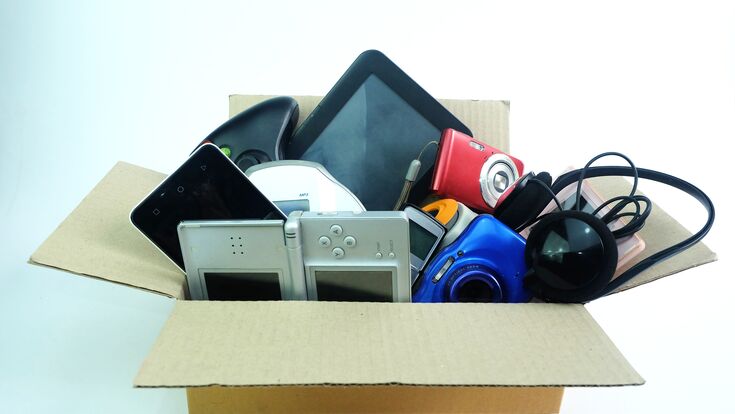E-Waste : 14th October: International E-Waste Day

The 14th of October is International E-Waste Day (#ewasteday). This year it focues on small items of e-waste, under the slogan ‘Recycle it all, no matter how small!’.
The UN estimated that in 2019 over 22 million tonnes of small e-waste were produced worldwide. Making it 40% of the about 57 million tonnes of e-waste arising globally. If the quantity of these small items keeps on increasing at the same rate as total e-waste (around 3% per year) by 2030 there will be 29 million tonnes of small e-waste per year. Also only 17,4 % of that whole amount of e-waste was recycled.
Due to their size, items such as electric toothbrushes, mobile phones, but also toasters and blow dryers are often and up in regular waste bins and are subsequently landfilled or incinerated. This of course means that important raw materials are lost. It is estimated that in Europe, up to 1.4 kg of e-waste per inhabitant ends up in the general waste bin every year.
Only recently the Parties to the Basel Convention agreed to the "Swiss-Ghana Amendments", establishing not only new definitions of hazardous and non-hazardous electronic waste, but also banning those two categories from trade or at a minimum require notification by the exporting country and consent by the importing country prior to export.
For recyclers e-waste has a big economic potential. It is estimated that the 82,6 % of e-waste that is not recycled globally has a worth of $47 billion. Specific high-value parts like whole PCBs can be sold if they are sorted out before shredding. Ferrous and non-ferrous metals are of high value and can all be sold as they are for refining.
Apart from the value of the materials, many types of e-waste contain hazardous substances such as lead, mercury or per- and polyfluoroalkyl substances (PFAS), etc. These must be taken care of separately to avoid harming both humans and the environment.
